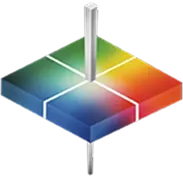1. Consider Color-Based Regulations
Every country has a number of regulations based on colorant use in beverages. Along with varying by country, these regulations also depend on the type of drink you're making and whether it's part of a dry mix formula or ready to drink from the shelves. Before you start adding colors to your drinks or changing their formulas, explore your coloration options carefully to choose ingredients that fit your sales area's regulations and make your drinks the color you've intended.
2. Understand Base Color Effects
Even drinks that appear transparent can have a base color, and this base color often affects the way your drink appears. Anticipate these color reactions in your sampling and be prepared to try a range of colorants to find the ones that achieve your desired color.
3. Remember That Color Changes Over Time
Many energy drinks and nutritional beverages are shelf-stable, meaning they may sit on a shelf or in a cabinet for some time before consumption. Where possible, try to test and anticipate how your product may degrade or evolve over time, and how that may affect the color of the drink. If the color changes too much, people may not want to drink it or buy it again, even if the product is still perfectly fine to drink. As a result, try to work with ingredients that are shelf-stable and not likely to change.
4. Know Your Audience's Preferences
Functional beverages like sports drinks are well-known for their bright, vibrant colors. But which colors appeal to your customers? Consider these color differences:
- Warm colors promote energy and fun and are most successful in energy drinks, juices, and seltzers. They are ideal for enhancing flavors like pineapple, cherry, and mango.
- Cool colors promote creativity and relaxation, making them an ideal choice for nutrient-rich drinks. They also emphasize flavors like blueberry, kiwi, and grape.


